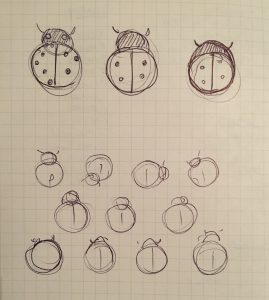
Refik Anadol is a Turkish media artist who specializes in “parametric data sculptures.” As demonstrated in his computational paintings, “Wind of Boston,” Anadol uses Processing.js to visualize site-specific data in the form of abstract art and installation. In this specific project, he analyzed the wind patterns around Boston by collecting data from the Boston Logan Airport. By taking factors like wind direction, speed, temperature, and noise fields into account, Anadol created a set of moving, coded displays to reflect these numbers. In his own words, he was motivated to find a “poetic way” to visualize the invisible. I admire this type of work as it finds a method of displaying data that is primarily expressive rather than informative. By embodying large quantities of ever-changing data in the form of an abstract painting, the audience is able to connect with the feeling of the wind patterns rather than the numbers behind it.
![[OLD FALL 2018] 15-104 • Introduction to Computing for Creative Practice](../../../../wp-content/uploads/2020/08/stop-banner.png)





